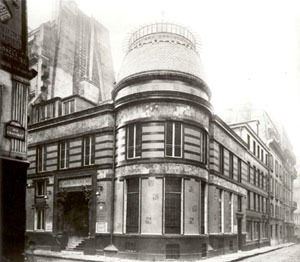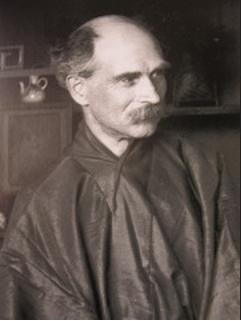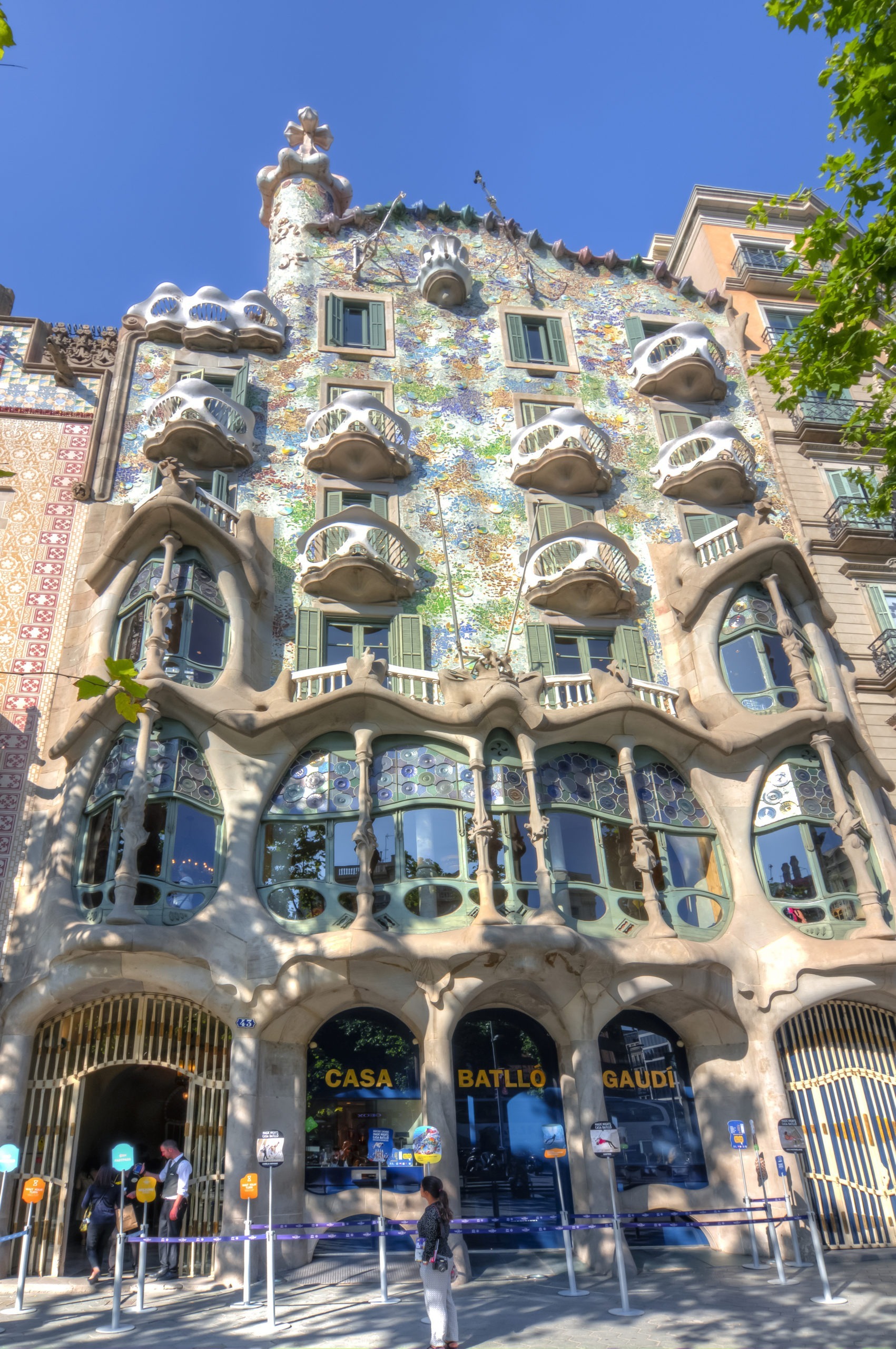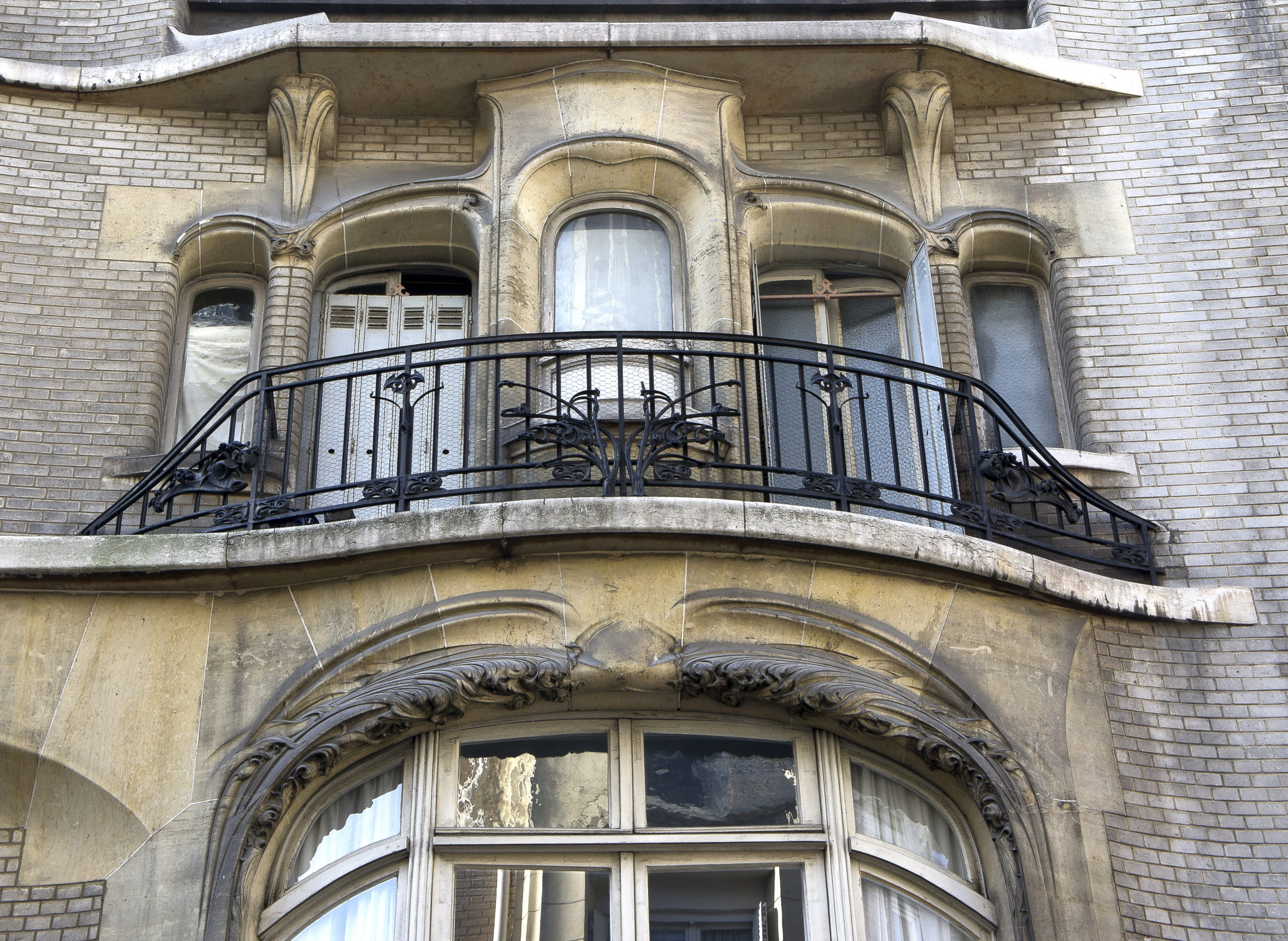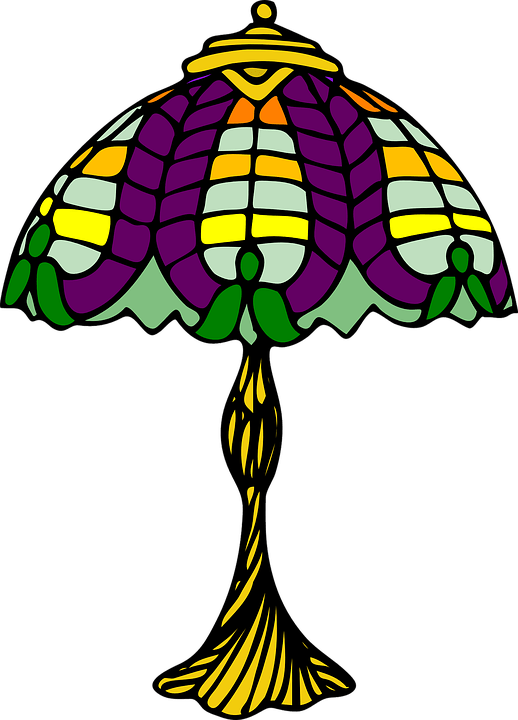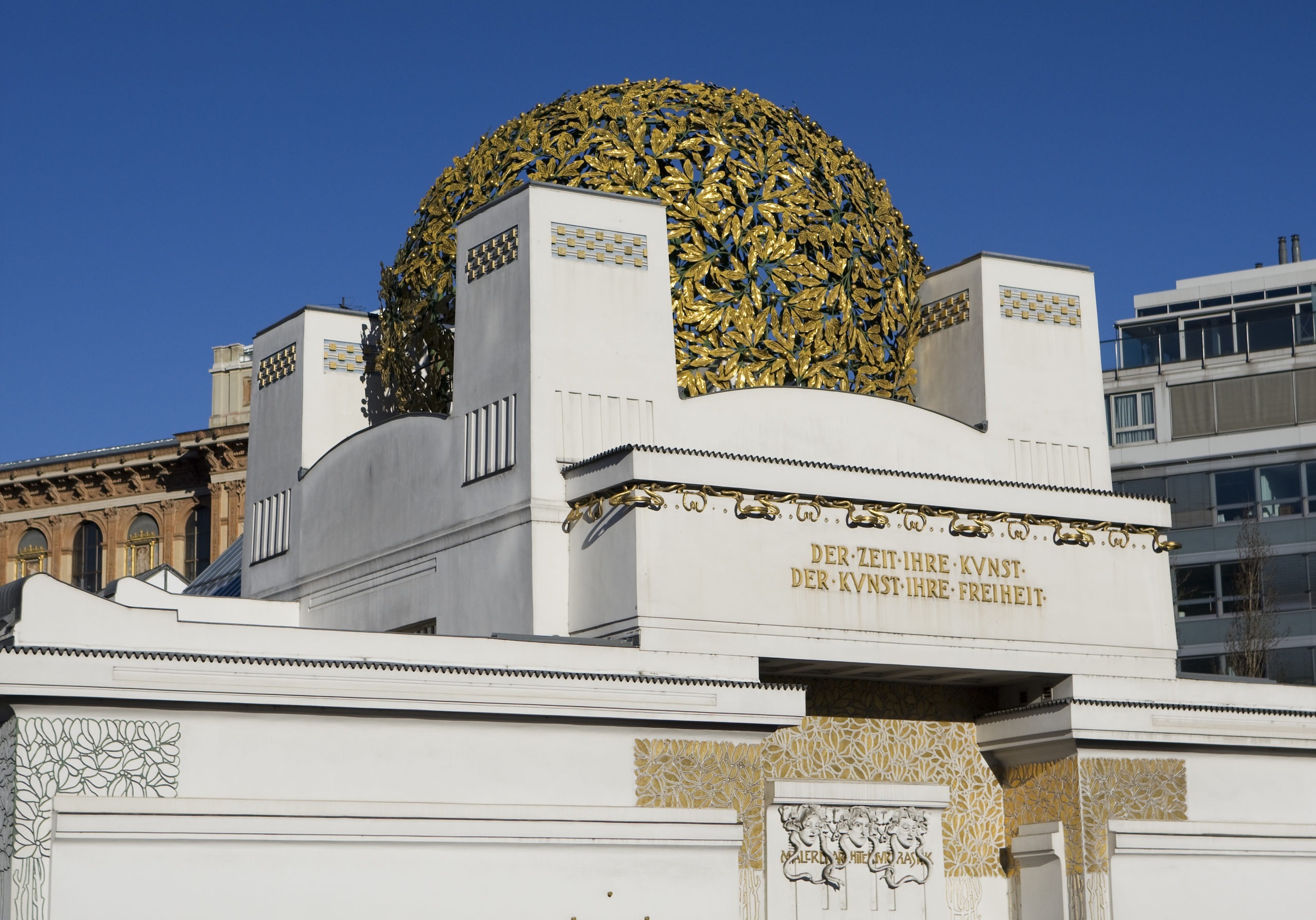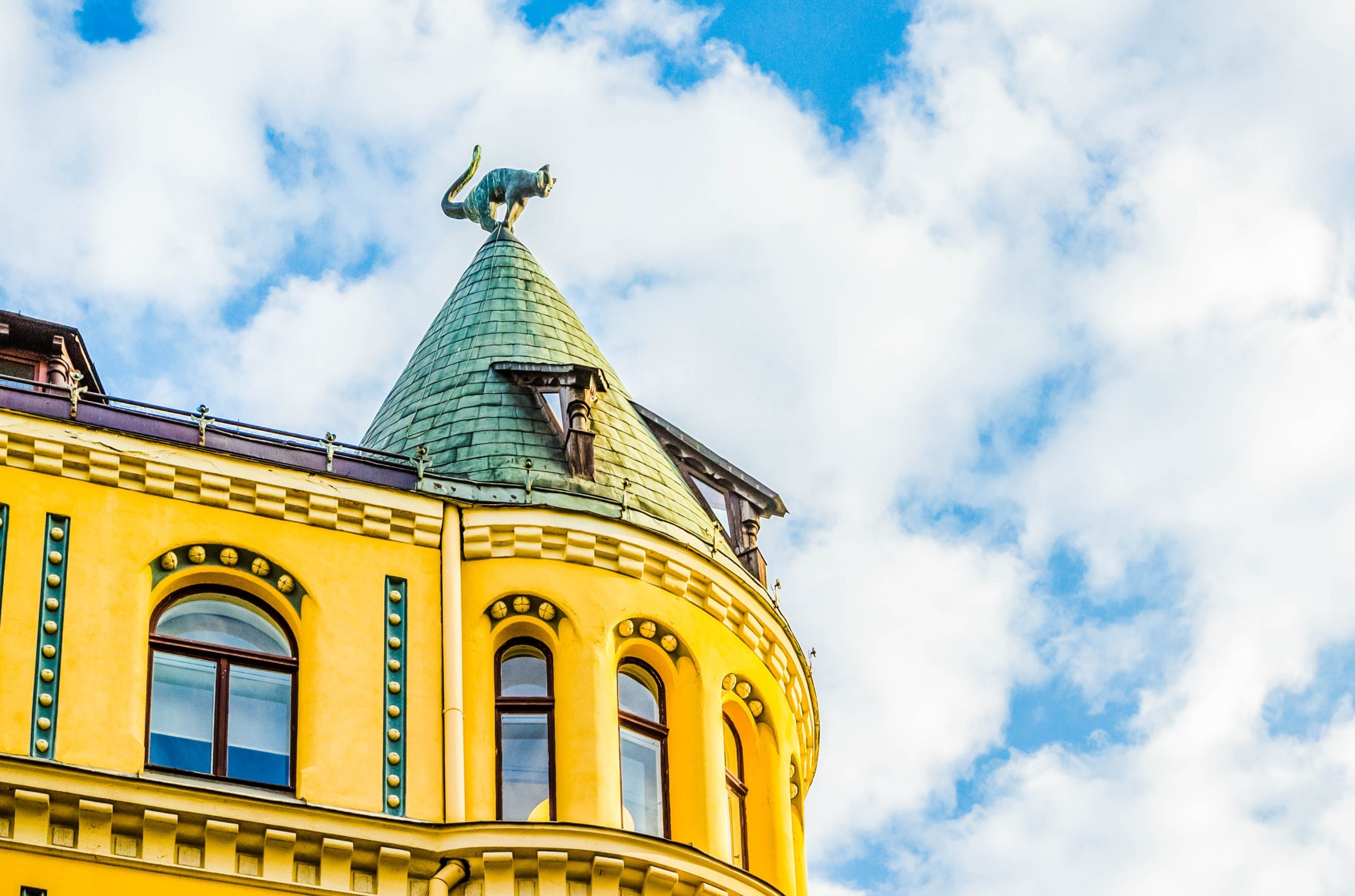Those who have been to Paris or seen images of it must have remembered the plant-like, swirling gates that open into the city’s subway system. Thanks to Hector Guimard’s timeless design for the entrances, Style Metro has maintained as one of the symbols for Art Nouveau in France. The design was unveiled in 1900 during Paris World’s Fair and became an icon of the Art Nouveau movement. However, the Nouveau style is not new; it has been practiced for years. Artists of the Art Nouveau movement drew inspiration from Rococo curves and Celtic graphic themes, as well as Japanese painters Ando Hiroshige and Katsushika Hokuai and William Blake’s Songs of Innocence.
What is Nouveau Architecture?
A widespread European art trend from the late 1890s until World War I was known as Art Nouveau, which means “new art.” The new movement countered the classical values of architecture and art, wherein nature was considered the most perfect source of inspiration and knowledge regarding aesthetic ideals and views about beauty. Between 1890 and 1914, the United States and Europe were swept up in the Art Nouveau craze. Organic flowing shapes found in nature, such as the vines and the leaves of flowers, are heavily influenced by this style. Design for interiors and jewelry soon followed. Glassware, jewelry, and posters all included characteristics of the trend.
Art Nouveau architecture and art were characterized by curved forms and ornate embellishment based on natural shapes. It was an exotic, extravagant, and modern break from the creative past that gave rise to Art Nouveau. Art Nouveau’s influence on architecture, design and the visual arts has made it feasible to create “complete works of art” by harmonizing all building’s components, from its windows to its doorknobs to its decorative flourishes.
Artists of the Work Nouveau movement strove to produce art relevant to the modern world. They sought innovative ways to promote handicrafts, restore the aesthetic value of art and design, and restore the aesthetic worth of everyday goods as the pace of industrialization increased. Art Nouveau architects turned their backs on the classical civilizations of Greece and Rome, which had dominated architecture for much of the nineteenth century. They had no choice but to stray from more established modes of artistic expression. Flowers and other plant life provided an alternate source of design inspiration for Art Nouveau architects.
The Birth of Nouveau Architecture
Siegfried Bing’s renowned Maison de l’Art Nouveau, a Parisian art gallery, popularized Art Nouveau, a French term for “New Style.” Art Nouveau flourished in several European cities between 1890 and 1914, not only in France but across the globe. For instance, Alesund, Norway, was almost burnt to the ground in 1904, destroying over 800 dwellings. It was renovated during this period and is now called “Art Nouveau town.” Art Nouveau was also developed in Belgium and France in the 1890s and lasted until WWI. Art Nouveau thrived following the 1900’s Paris Exposition Universelle. Art Nouveau fostered nontraditional visual expression. Unlike Arts and Crafts designers, Art Nouveau designers and architects used Industrial Age technologies to create highly styled, aesthetic creations.
Art Nouveau was expressed in the U.S. by Louis Comfort Tiffany, Louis Sullivan, and Frank Lloyd Wright. Sullivan pushed external decorating to lend “style” to the new skyscraper design; in 1896, he argued form follows function. Art Nouveau is primarily a European and American style but is also considered cosmopolitan. Different countries call Art Nouveau other names. In France, Art Nouveau offshoots are known as Belle Epoque and Style Guimard. In Spain, it’s Modernism, and in Germany, Jugendstil. In the U.S., Art Nouveau is called Tiffany Style after Louis Comfort Tiffany, inventor of the famed Tiffany lamp. During the 1920s, the Art Deco style of architecture took over from Art Nouveau, with its distinctive use of bold, striking geometric shapes and high-profile buildings like the Chrysler Building in New York City.
Characteristics of an Art Nouveau Architecture
Art Nouveau building has a distinctive look and feel. Many architectural designs incorporate organic shapes found in insects, birds, beautiful plant forms, and particularly whiplash curves, which resemble ribbon-like rays that reverse direction. It’s common for structures to be asymmetrical, meaning their sides aren’t always equal. Arched doors and windows depict organic elements. Art Nouveau mixes natural and manufactured components. Terra-cotta, glazed tile, and mosaic patterns are used. Nature-inspired colors, such as browns, yellows, blues, and greens, were used in building the buildings. The following characteristics summarized the important features of Art Nouveau architecture.
1. An emphasis on lines and intricate curvilinear patterns. Buildings have curved, flowing lines with organic embellishments. Art Nouveau buildings typically contain asymmetrical lines and structures, such as arches, to reinforce an organic interpretation and participation. Whiplash curves are the most distinctive Art Nouveau curvilinear feature, often intertwined with twists and scrolls to create a romantic feel. Long curling hair entwined with flowers reflected femininity and romanticism during this period, which highlighted feminine sensuality.
2. Nature-Inspired Patterns and Designs. Designers aimed to resist growing industrialization and abandon historicism and neoclassicism. Art Nouveau designers drew influence from nature, unlike earlier styles. This also brings back a bond with nature again. Thus, vine tendrils, blooms, buds, and even twigs were widely used in construction elements.
3. The colors are vibrant. Art Nouveau designers mimicked the colors of nature to resist industrialization’s grays. These hues appear in tile, mosaics, and stained glass. The La Sagrada Familia of Antoni Gaudi in Barcelona, Spain, is one perfect example of Art Nouveau-stained glass installations.
4. Implied Movement. The building’s curved patterns and organic shapes conveyed movement as one’s eye followed the smooth lines. Visually, it was impossible to tell if a piece was ornamental or structural, confusing passersby. Whiplash curves, a common design motif, also symbolize dynamism and movement.
5. Universal Presence. As nature is everywhere, this style appeared in architecture, interior design, art, graphic design, metalwork, etc. Designers added subtle touches to produce a fascinating piece of craftsmanship. Inside a building, you’ll see curvilinear components and nature-inspired themes.
Famous Landmarks of Nouveau Architecture
1. Casa Batllo in Barcelona, Spain by Antoni Gaudi’s. The balconies of Casa Batllo’s facade are bent and leaf-like. From the street, you can see the bottom of each balcony’s flower pattern and the undulating arches on the lower floors. Even the building’s edges are rounded; thus, Casa Batllo has few straight lines or geometric shapes.
2. Hotel Guimard in Paris, France by Hector Guimard. Guimard created the mansion for himself and Adeline Oppenheim, his wife. Arches with root-like motifs protect the Hotel Guimard’s windows. Floral-adorned wrought iron railings line an expansive balcony at the top of the building. Arches with asymmetrical, flowery motifs decorate the entryway to the residence.
3. Secession Building in Vienna, Austria by Joseph Maria Olbrich. It was completed in 1898 and is a must-see attraction in Vienna. The golden-hued leaf work dome is the design’s centerpiece and focal point. Japanese aesthetics heavily influences the Secession Building’s architecture. An iconic style lasted because of the town planning design of multistory buildings with curved facades surrounding the plaza. It’s one of Vienna’s best-preserved Art Nouveau structures, and it’s still going strong.
4. The Cats House in Riga, Latvia by Friedrich Scheffel. One of Latvia’s best-known Art Nouveau. Many individuals in this age see the cat home as a masterpiece because of its medieval castle-Esque appearance and slightly kitsch custard yellow color. The many cat ornaments adorning the building’s facade give it its name.
5. Barcelona’s Sagrada Familia by Antonio Gaudi. Gaudi undertook acoustical research for the temple spires, installing tubular bells inside them that jingle when the wind blows. The basilica is art nouveau in its most raw form, which has been criticized, yet art being subjective, this place has always drawn more wonder than repulsion.
Learn how Art Deco and Art Nouveau differ in our latest post.

